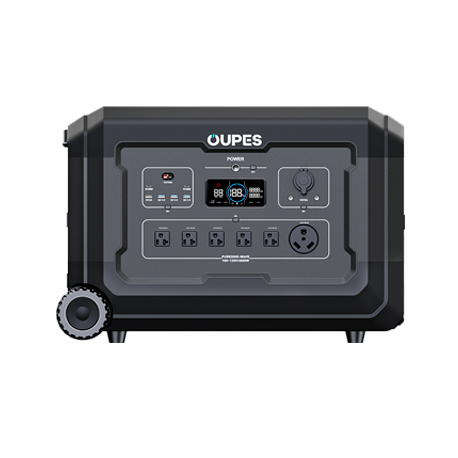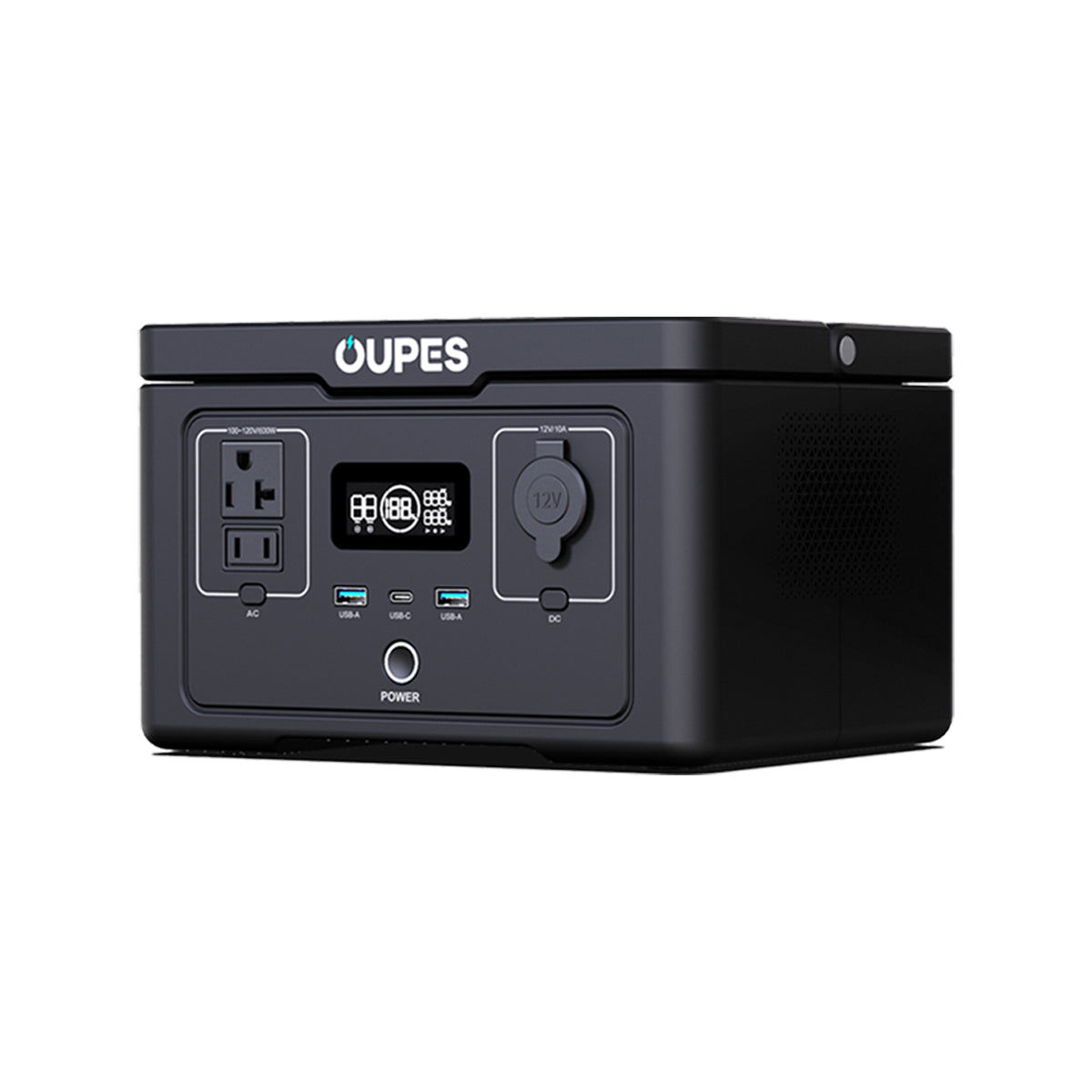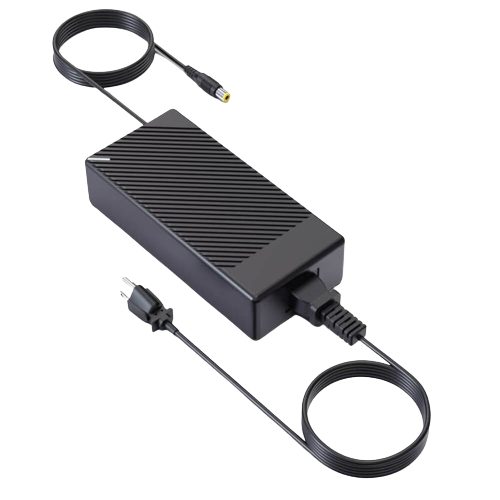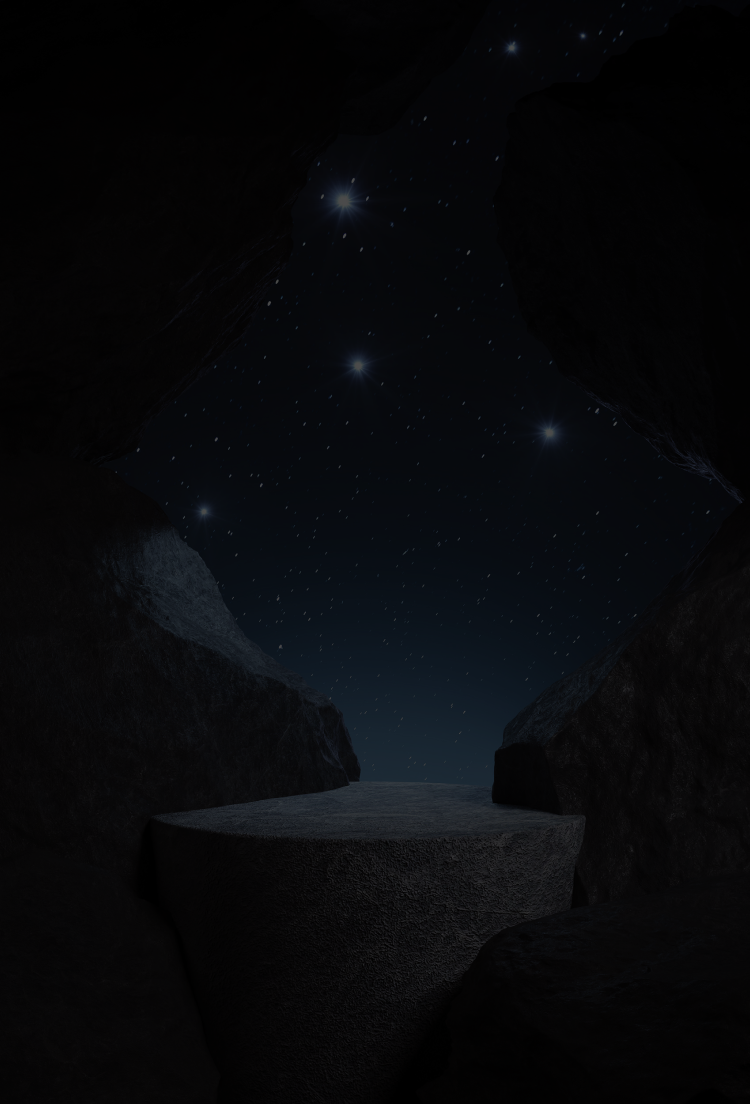What’s an Off-Grid Power System & How Do You Set One Up?
Venturing into the domains of camping, RVing, angling, or contemplating a lifestyle liberated from the constraints of the electrical grid, one might find themselves pondering the assimilation of an autonomous power system.
Initiating your odyssey into the sphere of off-grid power need not entail excessive complexity. While a lexicon awaits your acquaintance and an inherent learning curve accompanies the installation process, this guide aspires to streamline the establishment of an independent power source, disentangled from the conventional electrical grid.
We shall meticulously delve into every facet of off-grid systems, encompassing their merits, constraints, and the foundational protocols implicated in their configuration.
Without further preamble, let us embark upon this enlightening sojourn!
What’s an Off-Grid Power System?
In the domain of self-governing power systems, we encounter the occurrence of off-grid energy configurations, wherein an atypical energy source, like solar energy, undergoes a metamorphic transformation into readily exploitable electrical power.
In the realm of autonomous systems, this unconventional off-grid configuration represents a stark deviation from its tethered counterpart. It showcases a remarkable self-reliance, capable of functioning independently, impervious to the whimsical and erratic undulations of power interruptions.
Differences Between Off-Grid & On-Grid Power Systems

In the field of power generation, there's a captivating distinction between off-grid and on-grid systems. These two operate independently, detached from the usual utility grid, necessitating a detailed exploration.
Off-grid systems are self-sufficient, drawing DC power from solar arrays and converting it into AC electricity. They also store excess energy in sizable batteries. In contrast, on-grid solar power systems connect to the utility grid. As we delve into this, significant differences between these two innovative approaches to sustainable energy become evident.
Access to Electricity
In the sphere of self-sustaining energy production, off-the-grid power solutions operate autonomously, severing ties with the traditional electrical network. They depend solely on their indigenous energy creation or alternate charging techniques. Solar-based systems, in particular, harness energy through photovoltaic cells, adeptly transforming the sun’s radiant flux into electrical current.
Focusing on solar off-the-grid systems, the primary concern is the accumulation of excess electrical charge, necessitating storage facilities. During periods devoid of solar illumination, like overcast conditions or nocturnal intervals, these installations draw power from their concealed energy caches within batteries, positioning these as their principal energy vaults.
Intriguingly, OUPES solar generators possess the ability to gather energy not solely from photovoltaic matrices but also via alternating current outlets and electric vehicle charging portals.
In juxtaposition, on-grid systems form a symbiotic liaison with the local power network, ensuring a steadfast and reliable electric supply, particularly when solar output is inadequate to meet demand.
Excess Electricity Production Management
In the realm of off-grid power systems, there arises a crucial necessity - the efficient storage of surplus electrical energy typically harnessed in the form of electrochemical cells or batteries. This reserved energy reserve serves as the lifeblood of your abode, seamlessly illuminating your living quarters during overcast skies or the veil of night.
In stark contrast, surplus electricity stemming from on-grid energy networks often embarks on a different journey. On-grid systems, bolstered by the presence of a net meter, present an advantageous scenario for their proprietors.
However, should you find yourself entangled within an on-grid system devoid of the aforementioned net meter, a twist of fate may await. The surplus electrical bounty, an unclaimed treasure, dissipates into the grid, beyond your reach. In such circumstances, the electrifying surplus that you once possessed eludes your grasp, remaining an untapped reservoir of untold potential.
Billing
Off-grid solar systems, once established and financed, operate on "unrestricted electricity." Although they necessitate a substantial initial investment to cover the essential apparatus, they prove to be more economical and enduring in the long run compared to fossil-fuel-powered generators.
Should you find yourself compelled to generate the entirety of your electrical power from gasoline or diesel, the cost can fluctuate significantly, necessitating constant refueling.
Conversely, on-grid systems must remunerate for all the utility amenities they avail. Typically, a fixed fee is assessed for the connection to the grid, alongside additional expenses tied to the electricity consumption, adjusted for any net meter credits.
Grid Power Outages
Off-grid systems exhibit remarkable resilience in the face of on-grid power failures. The autarkic nature of off-grid systems ensures that power interruptions do not impede their electricity generation capabilities. Individuals who opt for off-grid solutions can revel in the uninterrupted flow of electricity, even during protracted blackouts, provided they can generate an ample power supply commensurate with their requirements.
In stark contrast, on-grid systems are entirely reliant on the grid's utility infrastructure. Any hiccup in the power supply chain equates to a disruptive loss of electricity access, unless, of course, you have a robust home backup power infrastructure in place.
Benefits of Using an Off-Grid Power System

Off-grid power systems boast a plethora of advantages, rendering them an alluring proposition for wilderness enthusiasts, nomadic travelers in their recreational vehicles, or individuals yearning for self-sufficiency in energy generation.
Energy Independence
Off-grid power systems bestow upon you the remarkable capability to dwell in any location that provides sufficient resources for the replenishment of your equipment's energy reserves.
They grant you the privilege of inhabiting and laboring in remote terrains, thus emancipating you from the capricious clutches of the local electric utility provider. You remain impervious to the disruptions caused by power outages that unleash chaos upon the surrounding populace.
Reduced Carbon Footprint
Off-grid solar power systems facilitate the cultivation of an environmentally conscious lifestyle. Numerous off-grid energy sources, encompassing solar, hydro, and wind, manifest significantly heightened ecological integrity in comparison to their on-grid and fossil fuel counterparts. These sustainable energy reservoirs eschew the utilization of fossil fuels, thereby ameliorating the magnitude of your carbon footprint.
Lower Energy Costs
Inhabit a realm devoid of the burdensome electric invoices. Embrace an existence immersed in the realm of renewable energy, a life tethered to the bounteous, untainted fount of natural resources for energy production. Through the deployment of advanced battery reservoirs, liberation from the conventional power grid becomes an attainable reality.
Armed with ample energy reservoirs, one can effortlessly engender an abundance of electrical power, permitting an autonomous and grid-independent lifestyle, unfettered by the vagaries of skyrocketing electricity tariffs.
Drawbacks of Using an Off-Grid Power System
Off-grid power solutions do, indeed, present certain impediments. It is imperative to meticulously assess the merits and demerits to ascertain whether the adoption of off-grid power aligns harmoniously with your specific circumstances.
Higher Initial Upfront Investment
Off-grid power solutions often require a higher initial investment compared to traditional on-grid options, depending on the chosen source like solar, wind, or water. Solar power, for instance, may take up to a decade to recover costs through reduced electricity bills.
However, these off-grid systems prove cost-effective in the long term, accumulating free electricity and tax credits. Additionally, permanent solar installations can enhance your home's value.
Limited Energy Storage
Irrespective of your chosen energy reservoir, you will inevitably encounter constraints on energy storage. A fuel-powered apparatus, whether it relies on gas or propane, necessitates a continuous and ample supply of fuel. Conversely, a solar-driven generator hinges on the adequacy of its battery reservoir to sustain your daily energy requisites.
When confronted with restricted storage capacities, the specter of exhausting your power reserves looms ever-present. However, there exist certain generator models that offer an avenue for the expansion of their battery storage capacity, such as the OUPES Mega 5 Home Backup & Portable Power Station.
With a storage capacity of 5040Wh, the OUPES Mega 5 offers the versatility of enhanced storage capacity, It supports capacity expansion to 10.08kWh by connecting an expansion battery. This augmentation bestows upon you a comprehensive liberation from conventional grid-dependent energy sources.
It remains of utmost importance to conduct a meticulous evaluation of your energy consumption prerequisites, all while factoring in the possibility of unforeseen exigencies when ascertaining your energy storage requisites.
Maintaining Energy Efficiency
Embracing an off-grid lifestyle entails assuming the responsibility for the meticulous upkeep of your power system. This encompasses the periodic replacement of batteries, solar panels, or any other constituent that experiences a gradual decline in efficacy or undergoes deterioration over time.
Fortunately, OUPES' solar generators feature cutting-edge lithium iron phosphate (LFP) batteries, which can be used for 3500+ cycles at 80% depth of discharge. So you can eliminate any worries about battery replacement for over a decade.
If your off-grid energy system harnesses the power of solar technology, you have a responsibility to diligently maintain and clean your photovoltaic panels. OUPES solar panels are inherently waterproof and resistant to dust penetration, making them immune to the harmful effects of energy efficiency degradation over time.
What Are the Costs of Using an Off-Grid Power System?

In the realm of financial planning for your self-sufficient energy system, the outlays can oscillate significantly, ranging from a modest $12,000 to a staggering $70,000. This expansive range presents a formidable quandary when one endeavors to devise a fiscal strategy for autonomous power generation.
The total expenses are intricately tied to the energy source harnessed and the scale of your setup, encompassing variables such as the size of energy reservoirs, power generation capacity, and the requisite number of solar panels tailored to your energy demands. Moreover, one must account for covert expenditures, such as the periodic maintenance of generators or the eventual replacement of energy storage units.
In addition to these multifaceted considerations, you may find yourself obligated to allocate funds for workforce-related costs and the intricate installation process, further augmenting the overall financial commitment.
It is noteworthy that your self-sustaining solar energy system may qualify for solar taxation credits. At present, the Investment Tax Credit (ITC) extends a generous 26% rebate for solar power installations completed during the timeframe spanning from 2020 to 2022, followed by a 22% rebate for systems implemented in 2023. This incentive can significantly alleviate the initial financial burden.
Alternatively, to mitigate the expenses linked to labor and installation, you have the opportunity to embark on the establishment of your self-reliant energy system—a prospect we shall delve into in the ensuing section.
How to Set Up an Off-Grid Power System

In this comprehensive manual, we shall elucidate the intricate steps involved in the establishment of a photovoltaic energy system. While choices exist for generating power off the grid, solar energy stands out as the prevailing choice.
Step 1: Consider Your Energy Requirements
When contemplating the acquisition of your self-sufficient solar power system for remote living, it becomes imperative to compute your overall energy requisites meticulously.
This necessitates the compilation of an inventory encompassing all your electrical apparatus. For each appliance and contrivance, you must ascertain their power consumption in watts and the intended duration of their operation. By doing so, you will derive the cumulative energy burden, quantified in watt-hours.
The utilization of an energy computation tool facilitates the assessment of your power utilization across a spectrum of domestic contraptions and the power burden essential for an off-grid construction.
Step 2: Select the Appropriate Solar Panels and Battery System
Tailoring your selection of an off-grid power system to align precisely with your energy consumption demands is paramount. The intricate interplay of "perplexity" and "burstiness" must be harmoniously orchestrated in this endeavor.
Imagine, for instance, that your daily energy requisites total 10 kilowatt-hours. In this scenario, contemplating the adoption of a 15 kWh system to satiate your daily energy yearnings is judicious.
When embarking on the journey of choosing your off-grid power system, a multitude of variables beckon your consideration:
- The dimensions and quantity of solar panels.
- The magnitude and genre of your power station or power hub's storage capacity.
- The scale and variant of the charge controller.
- The rating is ascribed to the inverter.
Each of these facets intricately weaves into the tapestry of an optimal off-grid power solution, ensuring that your energy needs are not just met, but elegantly exceeded.
Step 3: Choose the Right Placement for Your Solar Panels
Selecting the appropriate positioning for your solar panels holds paramount importance in optimizing the efficiency of energy harnessing within your abode. It is imperative to circumvent an excess of shading and afford your panels unfettered access to unobstructed solar rays.
Solar panels exhibit their utmost proficiency when oriented in a southerly direction, ensconced in locales that bask in unadulterated sunshine, devoid of any impediments that may eclipse the solar luminance.
Concurrently, contemplation must be given to whether you would prefer the installation of your panels upon the roofing structure. The act of rooftop installation acts as a deterrent against the capricious winds, thereby averting any inadvertent displacement of your panels. Moreover, this strategic placement engenders consistency, enabling more precise forecasting of your daily energy yield.
Nevertheless, an alternative option manifests itself, whereby the panels can be grounded, endowing you with greater maneuverability in relocating them to positions that optimize solar irradiance. In the realm of portable solar energy solutions, a nomadic enthusiast might opt for this versatile approach, while a property dweller may favor the permanence of mounted panels.
Step 4: Set Up Your Solar Battery Compartment
In the realm of power stations, each establishment boasts an exclusive configuration. Elaborate procedures are diligently executed to ensure the seamless integration of the power apparatus into your off-grid habitat, bestowing unmatched efficiency and convenience upon you.
Step 5: Install the Smart Distribution Panel
A distribution panel plays a critical role in overseeing and regulating the distribution of power within your system. With the OUPES solar generator kit, users can efficiently manage this energy distribution either through the panel itself or by using the OUPES mobile application.
This allows for greater control and monitoring of the power generated by the solar generator, ensuring that energy is distributed effectively and by your needs.
Step 6: Set Up Your Power Console and Connect Solar Panels to Power Console
In the domain of energy governance, the omnipotent energy console bestows upon you absolute dominion over the entirety of your power infrastructure. It empowers you to meticulously scrutinize energy consumption, fine-tune configurations, and witness the influx of energy displayed vividly on your interface.
To gain entry to this sovereign command, one must establish a connection between the energy nexus, the astute distribution matrix, and the energy kit control center, utilizing designated cables.
Conclusion

In the sphere of self-reliant energy solutions, a plethora of practical uses are plentiful, extending from idyllic backcountry jaunts and the nomadic lifestyle in your camper or compact habitat to the crucial bolstering of domestic emergency energy stores.
Self-contained solar arrays, endowed with the capability for autonomous power generation, endow you with the means to pursue a life detached from traditional electricity networks.
Having absorbed comprehensive knowledge about the merits, limitations, fiscal aspects, and complexities involved in setting up independent power systems, you are equipped with the discernment needed to independently evaluate whether these systems constitute the ideal remedy for your residence.























